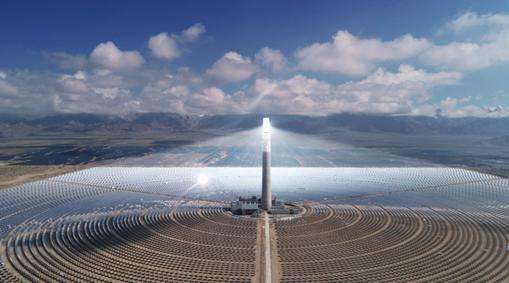With the development of wind energy today, cost pressure has always been a problem faced by the industry. At the just-concluded 6th Asian Wind Energy Conference, industry experts believed that gradually replacing the currently widely used epoxy resin with more cost-effective vinyl resin will become the development trend of wind power blades in the future.
Xiao Shuangyin, an engineer at Shangwei Wind Power Materials Co., Ltd., pointed out that the most prominent advantage of replacing epoxy resin with vinyl resin is that it can reduce the cost of blades. The cost of blades accounts for 20% to 30% of the cost of the entire power generation device, so material selection is crucial. Changing epoxy resin to vinyl can reduce costs by about 10%.
Technical personnel from Jinling DSM Resin Co., Ltd. of DSM Composite Resin Group said that 10% is only a very conservative estimate. After the main material of the blade is replaced, the surface protective layer supporting products such as gel coat will also be changed accordingly, and the saving effect will be equally considerable. In addition, mold costs account for a high proportion in blade production. Post-curing and other treatments are not required after material replacement, which will greatly improve the efficiency of mold use. Taking a 1.5MW blade as an example, the mold cost is about 3 million to 4 million yuan. It takes about two days to produce a blade using epoxy resin as the base material, but only one day using vinyl resin.
She also pointed out another advantage of vinyl resin replacing epoxy resin, that is, good craftsmanship. Vinyl resin can directly replace epoxy resin without changing the original epoxy resin molding structure design. At the same time, since vinyl resin is similar to unsaturated polyester resin, another main material used for blades, we can also learn from the existing mature technology for preparing blades with unsaturated resins. In addition, vinyl resin has the mechanical properties of epoxy resin, and various performance indicators such as fatigue resistance and stiffness can fully meet the design requirements. Moreover, composite materials are actually used on wind turbine blades. The performance indicators of vinyl resin and glass fiber and other materials after reasonable matching are not lower than those of epoxy system composite materials.
Xiao Shuangyin also affirmed the performance of vinyl resin. He told reporters that vinyl resin has been widely used in ships and yachts before, and its various properties have been confirmed by many parties.
It is understood that although vinyl resin has great advantages, its application development is still in its early stages. Domestic and foreign companies are actively conducting research on the application of vinyl resin on blades. Restricted by various factors, it will take some time for truly large-scale commercial production. However, many blade manufacturers such as Danish Elm Glass Fiber Products Co., Ltd. and AVIC Whitten Company have begun to consider or start applying vinyl resin.
Kebao Chemical specializes in vinyl resin and unsaturated polyester resin
Wind power generation fins are made of tensile fiberglass materials. According to the query of relevant public information: tensile FRP blades are light, strong, corrosion-resistant, uniform in material, and highly flexible. Tensile FRP reinforced blades have good durability and corrosion resistance and are resistant to acid, alkali, and atmospheric environment corrosion. , no regular maintenance is required.














